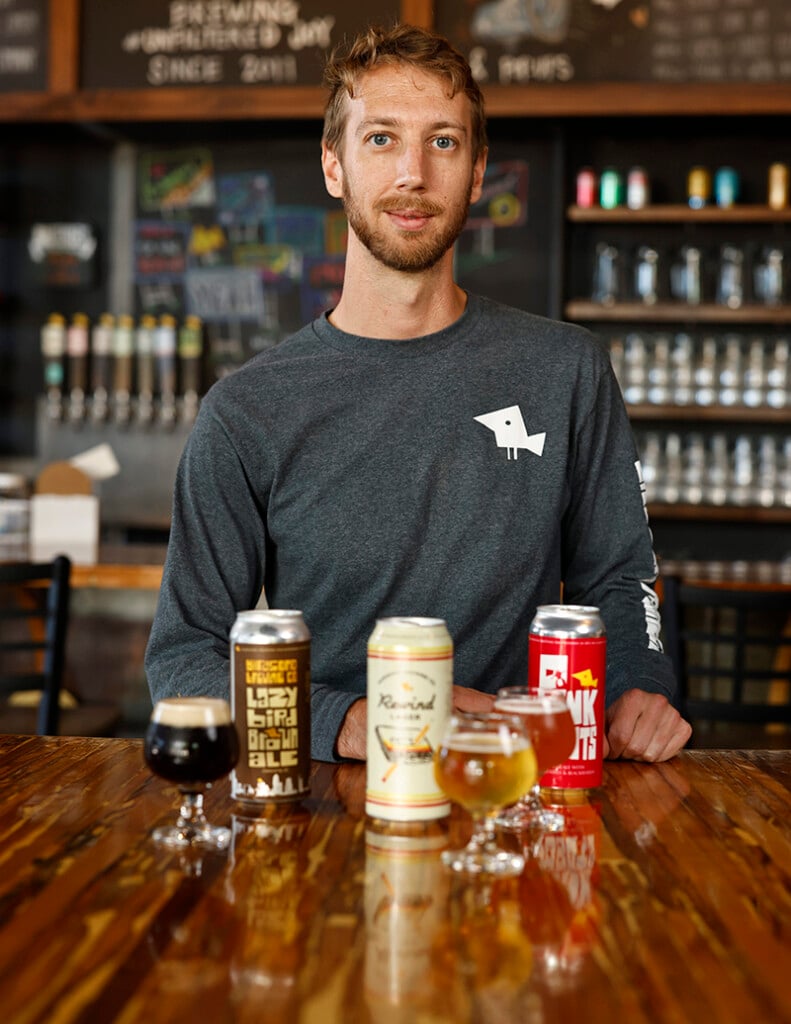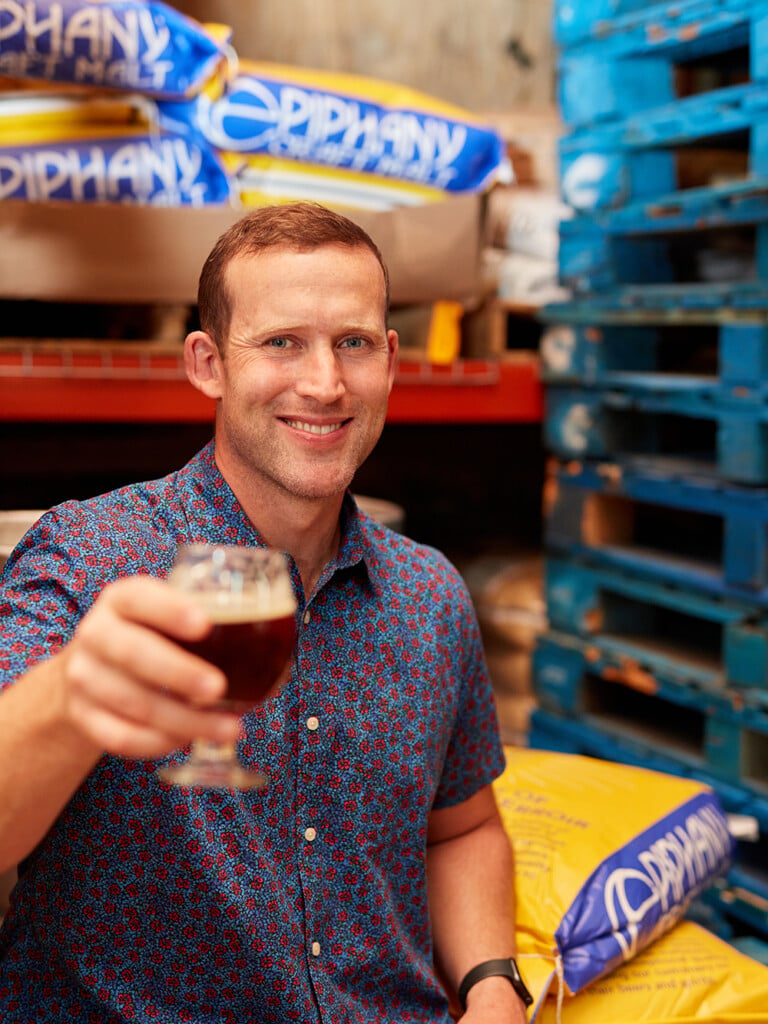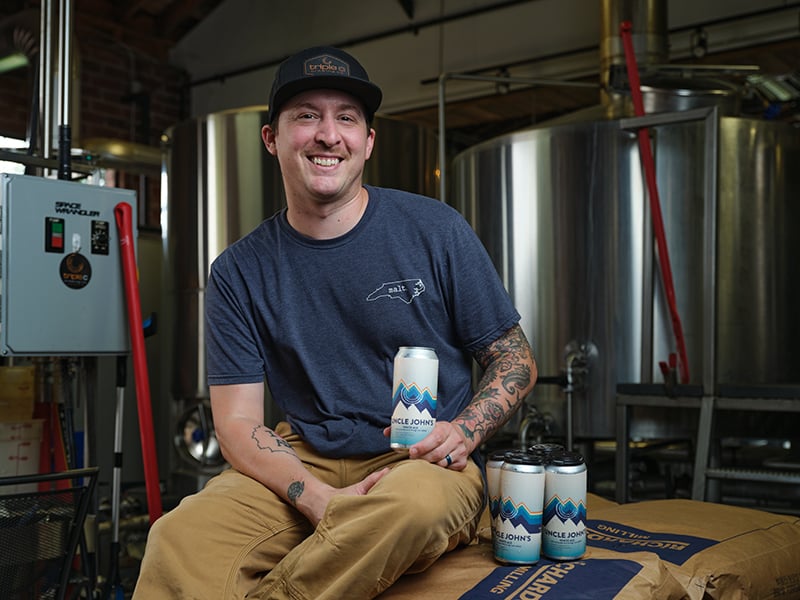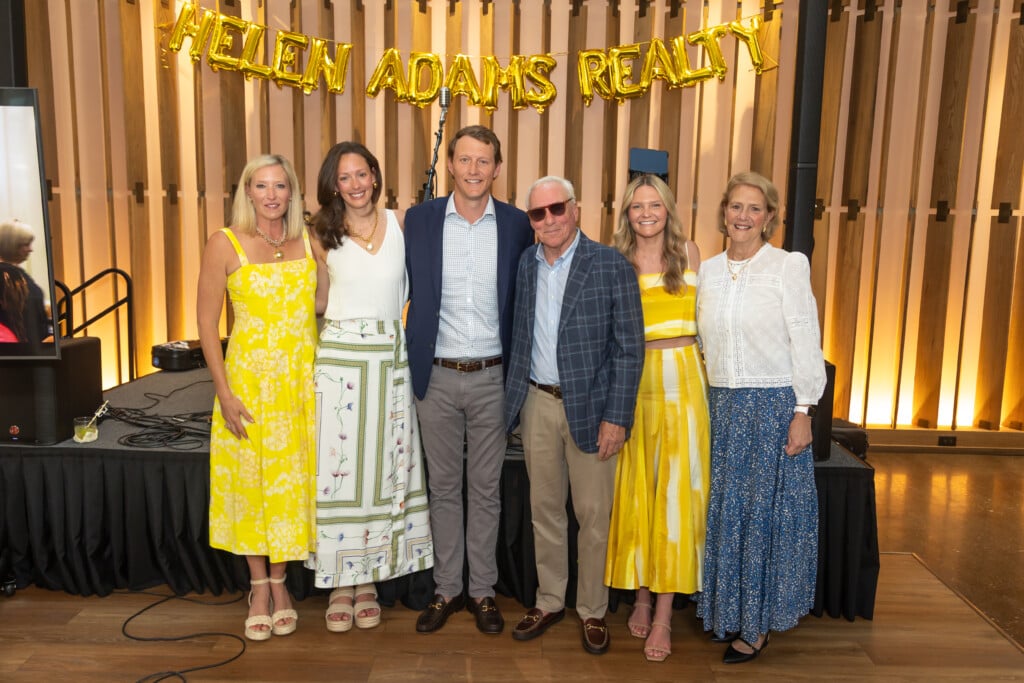We Sent A Beer-Resistant Staffer to Beer School
Heard this one? Someone who really does not like craft beer walks into a taproom…

The magazine received an invitation from Birdsong Brewing Co. in August: Would any of your staff like to come by the taproom for a step-by-step seminar on the proper way to taste beer—how to take account of appearance, aroma, flavor, mouthfeel, and finish? “This could be a great story,” a brewery spokesperson suggested, “especially from a woman’s perspective.”
I am not a beer drinker. I don’t like the taste. I don’t like the smell. I’ve never understood the brewery trend. To me, breweries are mostly drab, limited in their offerings, devoid of comfortable seating, and filled with people content to spend their days in those conditions. When forced to go, I’m the jerk who asks for a glass of rosé and impatiently inquires where we’re going next.
Nonetheless, I walk into the Birdsong Brewing Co. taproom on a Thursday afternoon in September, a few hours before they open to the public. I meet Conor Robinson, Birdsong’s head brewer, who gestures to a table and offers me some water. I admit humbly that I know less about beer than anyone who’s ever walked in the door. To hammer home the point, I confess that if I’ve ever drunk a full beer, it was either a Bud or Miller Lite. Conor winces, and I read his face: How did I get stuck doing this?
Conor tells me about the importance of beer tasting, for which he uses a more impressive-sounding term. “This is someone’s real job at a bigger brewery. Like at New Belgium (Brewing Company in Asheville), they have, like, four people working who only do sensory analysis.” (As of mid-October, New Belgium’s Asheville location was closed indefinitely because of damage from Hurricane Helene.)
Professional beer taster? For millions of people, that would be a dream job. I am not one of them.
Conor goes behind the bar and comes back with two sample beers—one light, one dark. We start the sensory analysis with appearance, and I learn that the color of all beer, from stouts to light lagers, lies on the red spectrum. The colors we see are based on our perception of the beer when light hits it. “Sorry,” Conor says. “I get really dorky about a lot of this stuff.”
He asks me, based on appearance, how I think the darker beer will taste. Yikes. A quiz.
“Bitter?” I guess. “Or skunkier?”
“Skunkier, interesting,” he says with a nod. “It’s interesting you came to bitter first.” I might have nailed it out of the gate. “You made a judgment based on what you saw,” he says to reassure me. But “this beer is actually not that bitter.” Fail.
We move on to smell, starting with the lighter beer. He forgoes the quiz and tells me what he smells: “grain character and hop matter.” I pray he doesn’t ask me what I smell, because it’s only one thing, and it’s distinct. I scribble on my notepad in tiny, overlapping letters so he can’t read it across the table: “dog pee.”
Now to the main event: taste. We start on the lighter sample, Rewind Lager. I sip, and I’m delighted that it does not taste like how it smells to me. This is not a taste I’m used to, so I struggle to find an adjective. Conor says he tastes cereal and florals. I take another sip. Yes, it has a certain Cheerios quality. But the carbonation feels aggressive, which brings us to the next step: mouthfeel. Conor says Rewind is, in fact, a high-carbonation beer. My first correct assessment! Carbonation affects the final step in the beer-tasting process: finish.
“If I want a beer that’s perceived as heavier, like a darker beer,” he says, “I want it to be a little thicker on your tongue and last a little bit, so I’m going to carbonate it lower.”
Such is the case with Lazy Bird, the darker sample. The brown ale tastes like coffee with a shot of soy sauce. I do not want this to last on my tongue.
As Conor goes for our next round of samples, I ask, “So, do you have to enjoy bitterness to be a beer drinker?”
“Yeah, it’s a bit of a masochist kind of thing,” Conor says with a chuckle. He tells me the bitterness of beer is measured according to a worldwide industry standard, the International Bitterness Unit, or IBU, scale. I feel validated. I’m not lacking in some flavor sophistication that separates me from the beer-guzzling population. I don’t like bitter things. Beer is bitter. And craft beer is typically as bitter as a Panthers fan.
Just when I’m ready to push back my chair and confidently confirm my status as a non-beer drinker, Conor plops a cloudy, pale-pink sample in front of me. I take a sip, and my mouth fills with the taste of tart berries. It’s not just the best thing I’ve tasted today. It is delightful. I would order this and drink the whole thing.
It’s Pink Robots, a kettle-soured ale with raspberries and blackberries. “It’s the most un-beer of beer,” Conor says.
The pink un-beer. I’m such a cliche—and, within extremely limited boundaries, a beer drinker.





